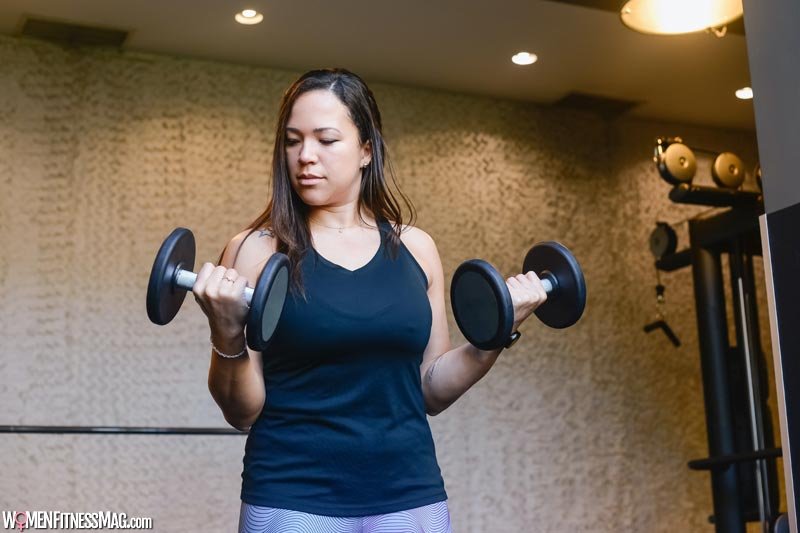Planning Your Home Fitness Gym : You need more than just wearing your workout clothes and heading out the door to get fit. You need a place to exercise that provides everything you need—including equipment and space. Fortunately, with some research and planning, you can turn any room into a home fitness gym that gives you the best possible chance at success.
Choose a room in your home that has the space.
The room you choose should be large enough to allow you to move freely but not so big that the space feels well-spent. It’s also essential that the room has a door that closes and can be locked when necessary. This will help keep the noise in and unwanted visitors out!
Room ventilation is essential because it allows airflow throughout the workout area, preventing condensation buildup on walls or floors (which can be dangerous).
Your home gym should also have plenty of storage space for your equipment and other items related to fitness training – such as towels, water bottles, etcetera – so make sure there is enough room for these things without taking up too much valuable floor space within your chosen location(s)
Make sure the room is quiet and well-ventilated.
The room you choose for your home gym should be quiet and well-ventilated. The room must have good soundproofing and proper ventilation to keep you from getting stuffy or overheating during your workout sessions. Select a room that is not near any other rooms where people are likely to be talking or making noise (such as bedrooms).
Find out how much space you need.
Once you’ve decided on a home fitness gym, the next step is figuring out how much space to allocate for each piece of equipment.
It’s more than just having enough room for your body and its movements. It’s also important to consider how much room you’ll need around each piece of equipment so that other activities can be done (like walking) without bumping into things or getting in the way of other exercises. Try leaving extra space between pieces so people can move freely without tripping over each other’s feet.
Setting up your home gym.
Your home gym can be set up in various ways, depending on your needs. If you want to work out on a treadmill or elliptical machine, place it at one end of the room and put other equipment nearby. For example, if you have an exercise bike next to your treadmill or elliptical machine, you can move freely between them during a workout without walking across the room each time.
If rowing is more appealing than running or biking for getting in shape and staying fit, then consider buying an indoor rowing machine instead. Many people find that rowing helps strengthen their upper body while improving cardiovascular health because they use all their major muscle groups while working out this way.
Exercise balls are another popular choice for those looking to stay active at home without spending money on expensive equipment–and they’re great for building core strength! Using stability balls gives users extra support when performing specific exercises like situps or planks so that even beginners can quickly improve their fitness levels by using this cost-effective tool regularly.
Choosing your gym equipment.
Choose equipment that is easy to use. It’s no fun if it takes too long or requires too much effort just to start. If the machine has a lot of complicated settings, look for one with fewer options so that you can focus on a few essential exercises instead of trying out everything at once.
Choose durable equipment, so it lasts longer without breaking down on you mid-workout! This is especially important if your budget is limited. Buying more than one piece of equipment could put an unnecessary strain on those funds over time if they break down early in their life cycle due to poor quality materials or construction methods.
Home gyms don’t have to be fancy or expensive.
As you’re planning your home gym, it can be helpful to remember that you only need a little fancy equipment. You can get a great workout with just a few pieces of equipment. For example:
Dumbbells are one of the most versatile tools for strength training and toning muscles. They are also relatively inexpensive, ranging from $5-$50 per pair depending on their weight and size (typically 1-15 pounds). If you’re interested in buying dumbbells but need help figuring out where to start, check out this article for tips on selecting them!
Resistance bands: Resistance bands come in all shapes and sizes–from set packages like this one or individual pieces like these two –and they allow you to perform dozens of exercises at home without needing any other equipment!
We hope this article has inspired you to start planning your home gym! There’s no need to spend thousands of dollars on equipment or even have an elaborate space–with some creativity; you can make an effective workout area in any room of your house. For professional home gym planning and design, contact Gym Concepts to learn more about their services, fitness equipment, and accessories.
Related Videos about Planning Your Home Fitness Gym :
Planning Your Home Fitness Gym
home gym essentials list, home gym equipment, how to set up a home gym in a small space, 10 home gym must haves, home gym essentials on a budget, home gym ideas, how to make a home gym with no money, home gym layout planner,




